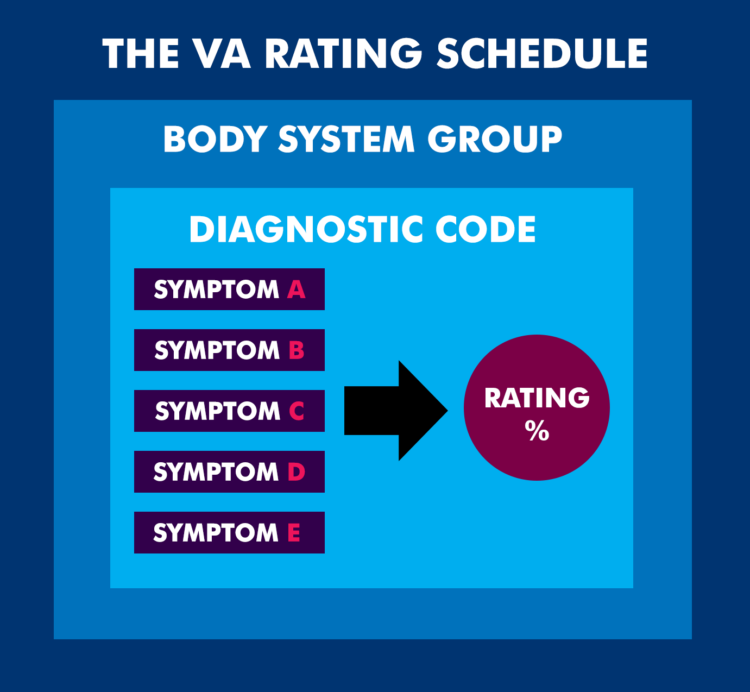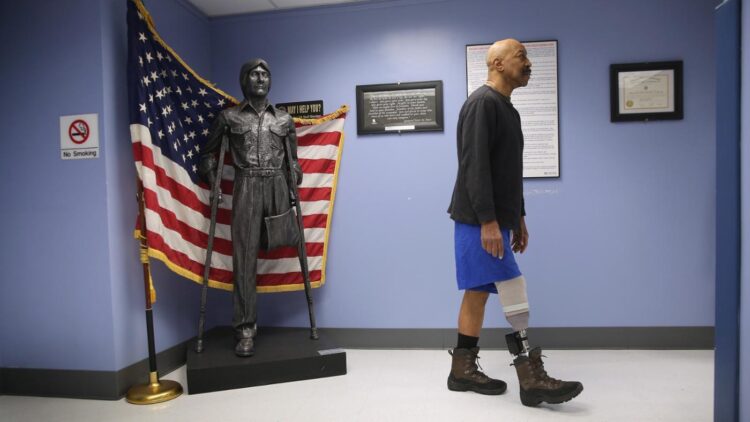
When injured during active duty, a soldier faces a lot of uncertainty about their future. Fortunately, they do have options for financial compensation to get their new lives on track and provide them with the support they need to thrive in whatever new path they choose. Unfortunately, there are a lot of hoops they have to go through in order to receive VA benefits, and full disability benefits can be difficult to attain.
The top two most important things to helping you receive the maximum benefits package to which you are entitled are to educate yourself about how disability benefits are determined and hire a VA disability lawyer to help with your claim.
How the Disability Rating System Works

The VA disability rating system may be fun for people who like math, however, it can be a real pain for veterans trying to get the maximum benefit amount available. The system claims to be designed in a way that prevents anyone from claiming disability benefits above 100%. The reasoning is that you cannot be over 100% disabled. That logic is sound, but the true reasoning behind the logic seems to be less concerned with math than that.
Unless you have a single disability that gets you a rating of 100% disabled, it becomes extremely difficult to get this full rating. Combining two lower-rated disabilities is unlikely to get you to that desired 100% rating. When you are combining lower disability ratings, you aren’t adding percentages together. Instead, each disability is calculated in succession, with the percentage taken off of what is left.
For example, say that you have two service-related disabilities, which both receive a 50% rating. If you added those together, you would be 100% disabled, but that is not how the process works. Instead, the rating process looks at you as being 100% able-bodied before applying the disability ratings. They apply the first rating, and you go from being 100% able-bodied to 50% because 50% of 100 is 50.
Then they apply the second disability to what is left. So 50% of 50%, which is 25%. You are now judged to be 25% able-bodied and 75% disabled. Disability ratings are always rounded to the nearest 10%, which means that your rating would be rounded up from 75% to 80% disabled. The closer you get to 100%, the more difficult it becomes to actually reach that number.
You don’t round a disability rating up or down until all of the disabilities have been calculated. As a result, if you were to continue to add more disabilities which were each rated at 50%, after your third disability you would be determined to be 87.5% disabled, so you would receive a disability rating of 90%. After your fourth disability was added you would be 93.75% disabled, so still, receive a 90% disability rating.
With your fifth disability, you would be 96.875% disabled and finally receive that 100% disability rating. You can understand now why the mathematically minded would enjoy these calculations while it can be infuriating for those trying to get adequate disability compensation.
The system could work by simply adding disability ratings and putting on a cap for a maximum disability rating of 100%. Of course, that would just be too easy and cost too much in higher payout rates.
Alternative to 100% Disability Rating

There is an alternative route to take in order to receive full VA disability benefits. A math-free route. You can get a full disability rating by showing evidence of an inability to get and sustain substantially gainful employment. Substantially gainful employment is defined as employment where the veteran obtains a salary, which puts them over the poverty line.
This form of disability is known as a total disability rating based on individual unemployability (TDIU). TDIU is one of many claims disabled veterans can file based on their unique circumstances. A disabled vet should automatically be considered for TDIU if evidence shows that their disability is keeping them from working and their disability rating is high enough.
A qualifying disability rating to get a TDIU is 60% for a single disability or 70% for combined disabilities. A veteran should not have to ask to be considered for a TDIU if they meet the conditions. However, it is better to be safe than sorry, because the VA often fails to award a TDIU unless it is specifically requested by the veteran or their attorney.
How Payment Is Calculated

There are multiple factors that go into calculating the amount a disabled veteran will receive for their VA disability claim. The main factors are to do with dependents and a veteran’s disability rating. The math gets even more complicated here, but we’ve dealt with numbers enough, so we won’t go too far into that here. Suffice it to say, though, once again, things are not straightforward and simple.
The amount that a veteran with no dependants and a 50% disability rating receives is not half of the amount that a veteran with no dependants and a 100% disability rating or a TDIU receives. Not even close. A veteran with a 50% rating receives less than a third of what a veteran with a 100% rating gets. A veteran with two disabilities rated at 50% for an 80% overall rating receives just over half of what a veteran with a full rating receives.
This vast chasm between the amount received for a 100% rating and lower ratings underscores why veterans really covet that 100% rating and why it is so frustrating that it can be so difficult to attain.
Bring in Professional Help

Bringing in a VA disability lawyer can help you to navigate the bureaucracy of a VA disability claim and ensure you get the highest disability rating and most compensation possible. The VA disability process can be extremely complicated to try to deal with on your own.
A VA disability lawyer knows all of the ins and outs of the system and will help greatly in getting you the money you need to move on from your injury and live your best life. For further study, read more about some of the most frequently asked questions.











